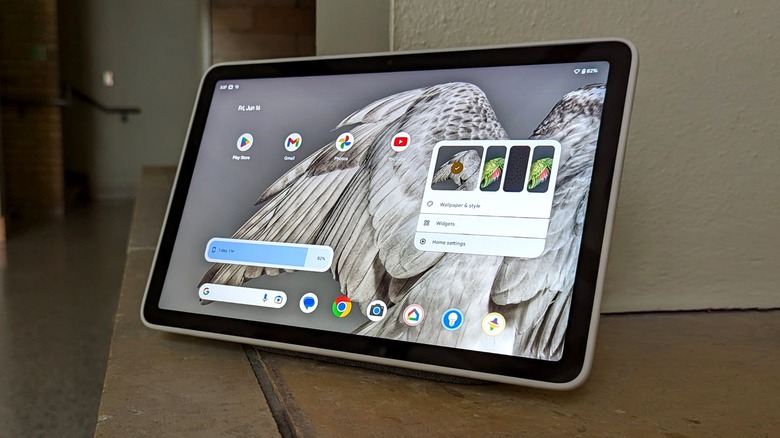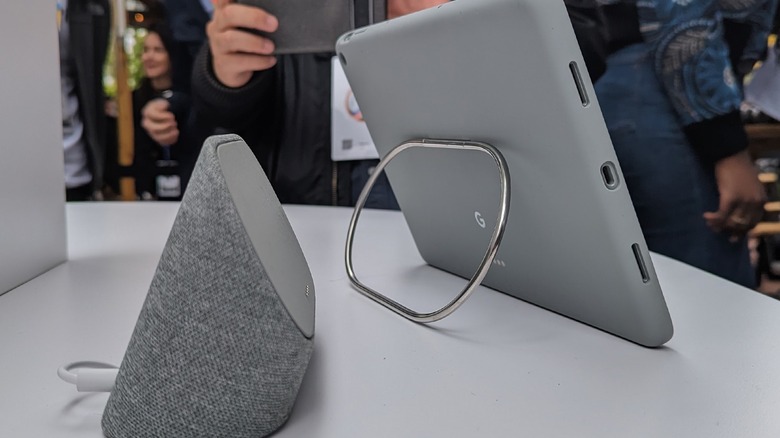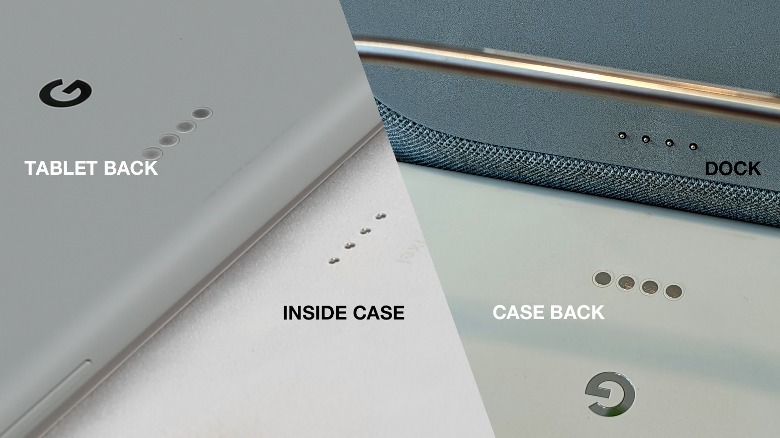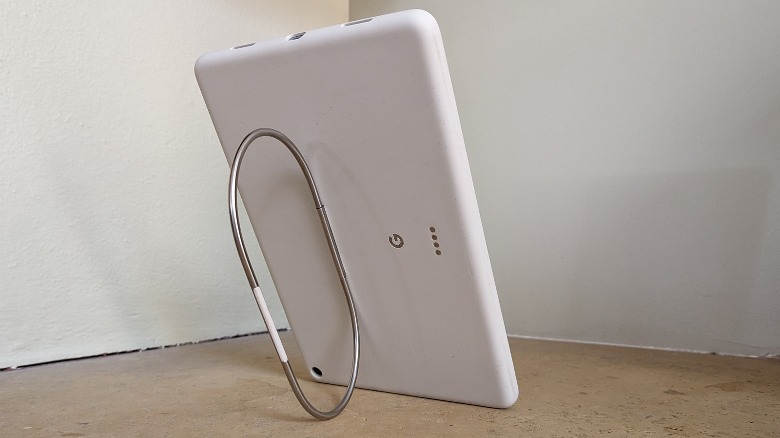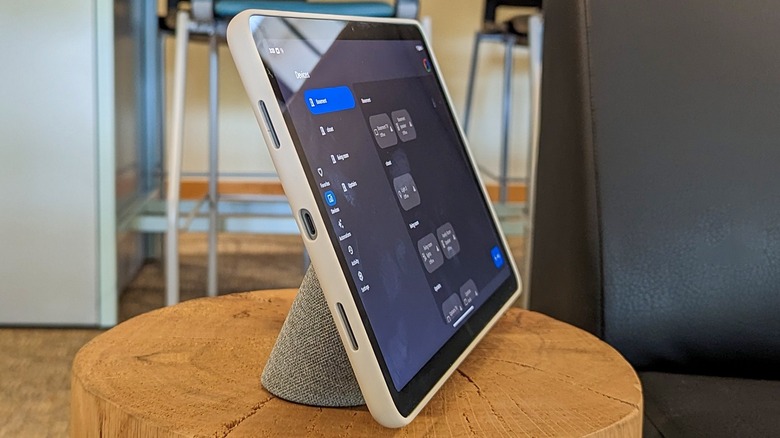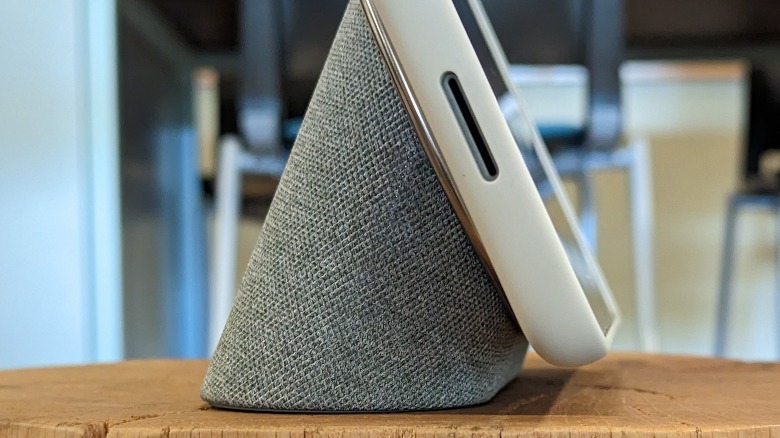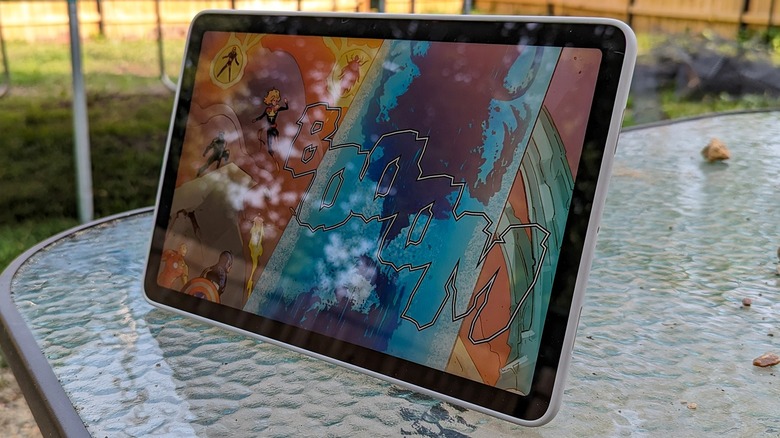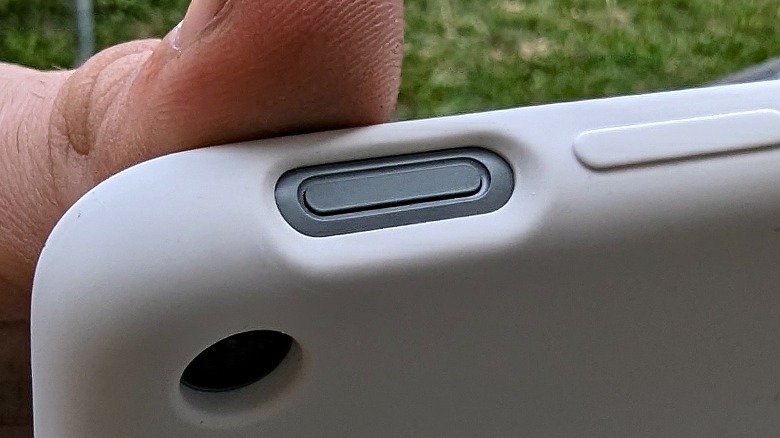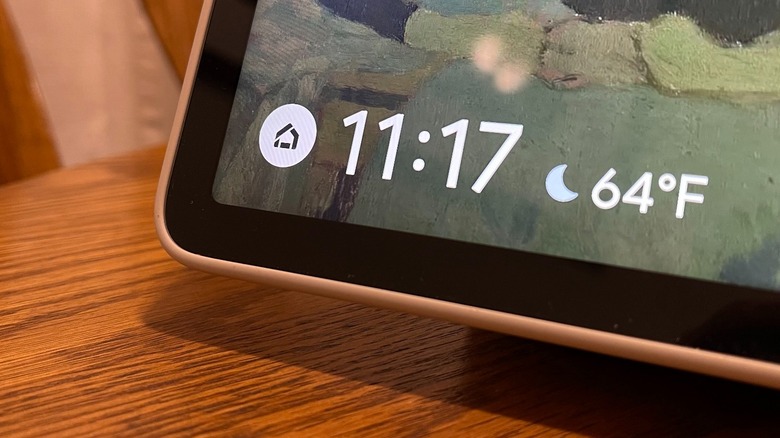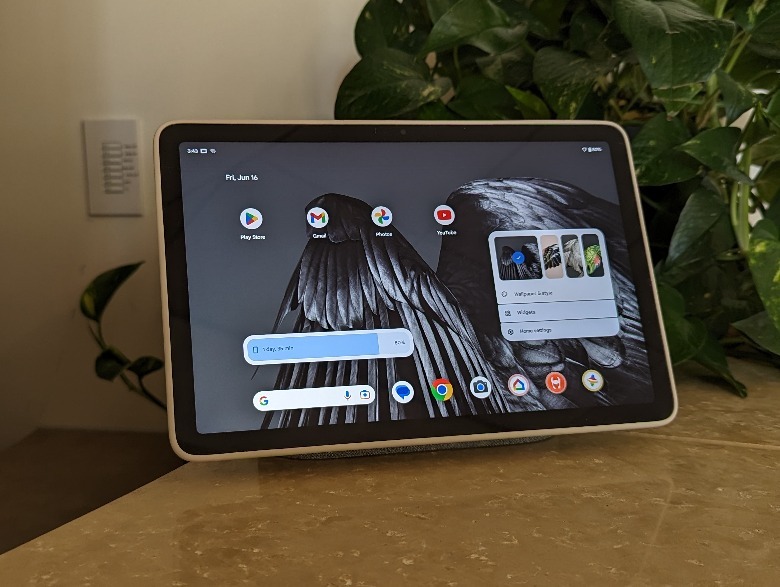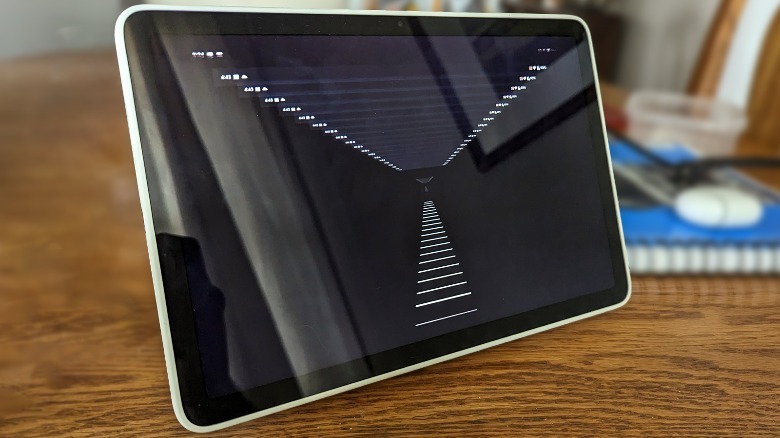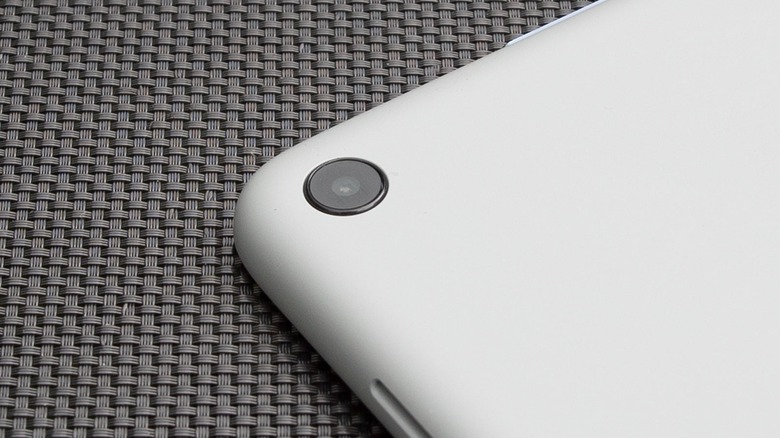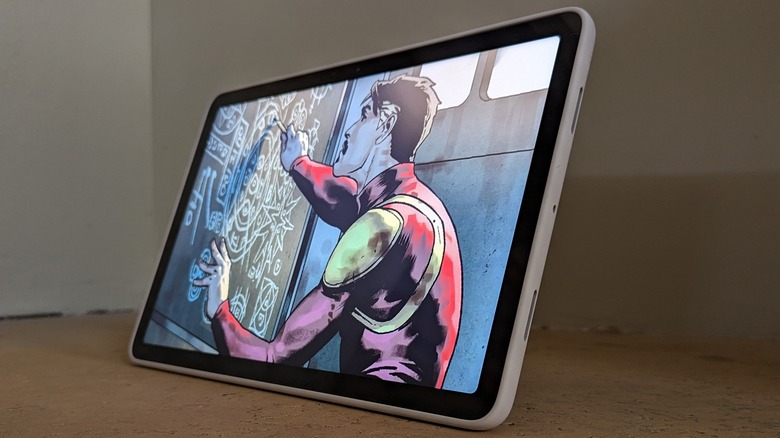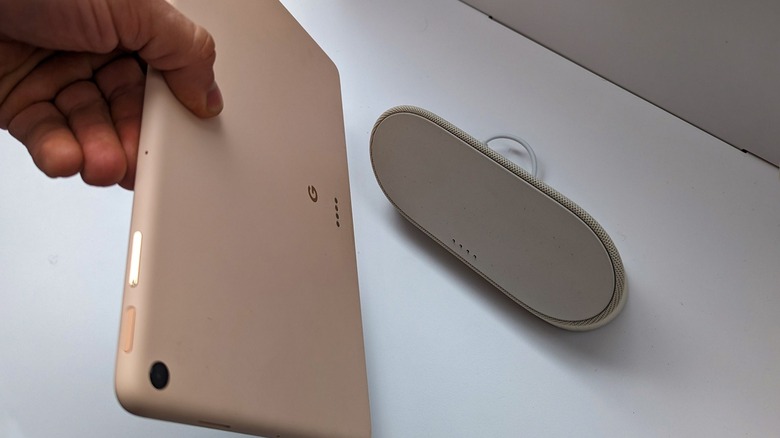Google Pixel Tablet Review: Not Made To Battle Galaxy Tab Or iPad, And That's A Good Thing
- Top-quality IPS LCD display
- Not lacking for optimized apps at launch
- Price includes Charging Speaker Dock
- Great battery life
- Cameras surprisingly capable
- 4x speaker audio output
- 3x far-field microphone array
- Price would be a bit high if not for the dock
- Display limited to 60Hz refresh rate
- Pixel Tablet Case should also be included by default
The Google Pixel Tablet is a high-end smart home touchscreen display that is also an Android tablet. This device isn't meant to go toe-to-toe with the biggest and best Samsung and Apple to offer in mightily-capable slates. Instead, it's a versatile, dependable piece of hardware that delivers on the promise made by Google back in February 2011 with the release of Android Honeycomb.
We've reached a point at which it's not unreasonable to expect that a new Android tablet should be just as capable as the most popular tablet line on earth: the iPad. But this Google tablet isn't made to compete directly with Apple's tablet. Instead, it's positioned to attempt to shift the tablet paradigm. It's here to forge a new path forward.
Google's proposition with the Pixel Tablet is that you won't just get the tablet, you'll get a dock, too. The official Charging Speaker Dock is essential to this equation — without it, the Pixel Tablet is just a tablet. Because the tablet cannot be purchased without the dock, you're forced to consider the dock as part of the experience. You already own the dock by default — you might as well use it.
But do you need another smart device — and are you looking for a tablet on its own, or are you looking for a new way to interact with a tablet? Google provided a Pixel Tablet for the purposes of this review.
Pixel Tablet Case
The Google Pixel Tablet you're seeing in photos in this review is almost always shown in an official Pixel Tablet Case. You do not need a Pixel Tablet Case to use a Pixel Tablet, but it feels like such a natural part of the setup, it's difficult to imagine not having it installed. If you're looking to use this tablet in a home with small children, a case is essential — just as essential as a case would be with any other large-screen smart device you're meant to carry around and use.
This case surrounds the sides and the back of the tablet with a soft-touch protective layer of silicone material. Inside (the bit that touches the tablet) is a microfiber lining — so you know the tablet is always comfortable. Below you'll see the tablet propped up in a way that's not shown in Google promotional materials for the case — but it works just fine.
This case has a pill-shaped metal ring kickstand on its back. It's capable of holding the tablet up at effectively any angle, and it's accented with a bit of polycarbonate that's ever-so-slightly more grippy than the stainless steel of the ring. This accessory gives the tablet raised edges to protect its screen and has a row of metal points that allow the dock to connect to the tablet it holds. The ring folds flat and makes finding the right position on the dock a simple task.
Charging Speaker Dock
The Charging Speaker Dock uses magnets to hold the tablet in place, and pogo pins to interact with the tablet — for power input and audio output. The dock is powered with a 30W barrel jack adapter. The cord is not USB-C. The tablet itself still has a USB-C port if you ever need to charge and aren't near the dock. The dock powers the tablet up to 90% by default, to optimize the lifespan of the tablet's battery– but this can be changed in the Pixel Tablet's settings.
Almost every popular smart screen and home assistant device with camera and microphone access, like the Amazon Echo Show 5, has the ability to toggle access to its camera(s) and microphone(s). The Google Pixel Tablet also has this ability — with or without the dock — through the tablet's lock screen settings.
At a not-yet-disclosed date in the future, you'll be able to purchase additional Charging Speaker Dock units on their own. A dock will cost $129.99 — but Google has not confirmed the possibility that the tablet will ever be sold on its own.
It's surprising that this dock's speaker array doesn't utilize the also-capable speaker array of the tablet. You can play audio with the tablet and it sounds great — but once you connect the tablet to the dock, these four speakers stop and the dock's speaker system starts. The speaker system in the dock is more capable than the tablet, of course, but why not augment the sound with speakers firing in all directions?
Touchscreen and fingerprint sensor
This tablet has an 11-inch 2560 x 1600 pixel IPS LCD touchscreen display that's quite decent. It doesn't get quite as bright as higher-end tablets with OLED displays — iPad Pro, Galaxy Tab S8, Lenovo Tab P12 Pro, and so forth. But the Pixel Tablet is certainly bright enough to handle any sort of indoor lighting environment — and outdoors, so long as you're in the shade.
Display quality and color accuracy are as good as or better than any tablet on the market today at this price. This device's display refresh rate is 60Hz, which is to be expected, given Google's recommended uses for the hardware. Still, now that the nicest tablets and smartphones on the market come with 120Hz displays, it's difficult to reconcile that any device has a lower refresh rate. If you're only planning on using the Pixel Tablet for everything other than gaming, you might never notice the difference.
The power button on this tablet is also a fingerprint scanner. This biometric hardware allows the user to hold a finger on the power button for a moment to bypass the tablet's lock screen. This fingerprint scanner is at least as accurate and quick as any we've tested before — and it's located at a very natural-feeling place on the tablet, too.
Intended uses
This tablet is meant to be used in more than one way. Its value potential is fulfilled by making full use of its many optimized apps and features, both on and off its dock. Google Home looks like it was made for a display this size — assuming you're working with an array of Google Home-connected devices in your smart home, this makes the Pixel Tablet an all-powerful hub, replacing the Nest devices that came before it.
While this device is limited to a refresh rate of 60 frames per second, it's still running at 2560 x 1600 pixels, which means it's just above "2K." Despite this, Google's enabled YouTube to stream content with its "Higher picture quality" setting — which would be able to reach 4K, but instead reaches the maximum resolution this device is capable of showing.
The Pixel Tablet can cast content to other devices, and the Pixel Tablet on its dock can be a target for casted content. At the moment, this means you can potentially create an infinite loop situation — but it's likely this oddity will be fixed in short order.
Google's Chrome web browser goes to desktop mode by default. It's still an Android app, but this version of Chrome is as close to a full desktop experience as Google's gotten on Android.
Perhaps the neatest trick this tablet is capable of is Drag & Drop with Google Photos. Like a desktop device, this tablet can now have an app like Gmail open on one half of its screen, Google Photos on the other, and a photo can be dragged and dropped into an email. This simple feature could mean great things for Android tablets of the near future.
Cameras front and back
The Google Pixel Tablet is meant to be used for video chat. Google Meet includes some features like continuous framing and 360-degree background. The continuous framing feature recognizes your face and allows you to walk around the room a bit without losing focus. The 360-degree background feature makes it appear that you are in a 3D environment that adapts to your position and movement — and it works surprisingly well. It'd be great if it also worked outside of Google Meet.
Both the front and back-facing cameras on the Google Pixel Tablet work pretty great for video chat, regardless of the app that's being used to do the chatting. The front and back-facing cameras on this device have nearly identical photo capabilities as well.
Both 8MP cameras have f/2.0 aperture, 2.51mm focal length, and a 3.67 x 2.76 mm sensor. The big difference is that the back-facing camera has a 5x zoom while the front-facing camera has a 3x zoom.
As you'll see above, the cameras on this device are capable of some acceptable still photos. They're by no means perfect, but they're certainly better than one might expect from a single 8MP camera with no flash and no focus assistance (and so forth).
Battery life
The Pixel Tablet is sold with a charging dock that makes charging ever-so-slightly simpler than plugging in a cord. It's difficult to imagine running out of battery during the day since it feels so natural to return the tablet to its dock whenever it's not being used. It also feels natural to use this device while it's docked — you might get this tablet and never even use it like you would any other tablet you've already owned.
However — leaving this device off the dock demonstrates the device's extraordinary battery optimization abilities. In standby mode (powered on, off the dock, not in active use), the Google Pixel Tablet has lasted in excess of 5.5 days — with over half its battery capacity still full.
Average battery life while in non-stop use is closer to 10-12 hours. That's off-dock, not plugged in with USB-C, with constant content streaming and/or gaming going on — this tablet can stand up to some serious on-screen action at full brightness, that's for sure.
Wrap-up
The Google Pixel Tablet is more expensive (approximately $500) than a new (10th generation) iPad (around $450). The Samsung Galaxy Tab S8 (with an 11-inch display) costs around $700. You get the Charging Speaker Dock with the Pixel Tablet, while neither the iPad nor the Samsung Tab includes a dock. Of course, both the Samsung Galaxy Tab S8 and the iPad (10th generation) are capable of outpacing the Pixel Tablet in terms of processing power (and display brightness and refresh rate, and so on). If you want power, go with Samsung or Apple. If you want a new experience, go with Google.
If you're thinking about buying a new tablet in 2023, you could do a lot worse than the Google Pixel Tablet. If you're not interested in trying something new — and just want a tablet — you'll do well to seek out Samsung, Apple, or Lenovo. If you want the cheapest tablet you can buy — while still avoiding buying garbage — check out the Amazon Fire Max 11, even if you're not buying one to play Roblox. If you're already in the Pixel ecosystem and have been waiting for a tablet to replace your Nest Hub or Nest Hub Max, the Google Pixel Tablet is a great piece of hardware to roll with.
You can purchase the Google Pixel Tablet for approximately $500 from Google on Amazon now. It does not appear that the Charging Speaker Dock is available for purchase separately as yet.
